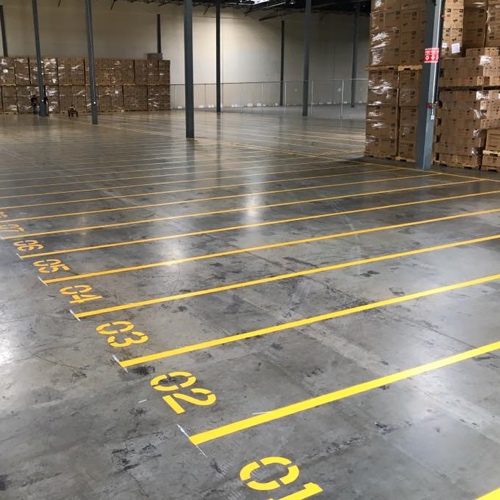Weather-proof asphalt striping refers to the application of durable marking techniques that can withstand various climatic conditions over an extended period. Achieving longevity in asphalt striping involves several key techniques and considerations tailored to different environmental challenges. Firstly, the choice of materials is critical. In regions experiencing extreme temperatures, from scorching heat to freezing cold, using high-quality thermoplastic materials is advisable. Thermoplastics offer excellent durability and adherence to surfaces, making them ideal for roads subjected to frequent temperature fluctuations. Additionally, incorporating reflective glass beads into the asphalt striping material enhances visibility, crucial for safety in low-light conditions or during inclement weather. Surface preparation is another vital aspect of weather-proof asphalt striping. Proper cleaning and priming of the surface ensure optimal adhesion of the asphalt striping material. In areas prone to heavy rainfall or high humidity, such as tropical climates, surface moisture can compromise the longevity of asphalt striping. Therefore, employing moisture-curing primers or ensuring adequate drying time before application is essential to prevent premature deterioration.

Application techniques play a pivotal role in the longevity of asphalt striping. Using advanced application methods, such as airless spraying systems, ensures uniform thickness and coverage. This uniformity is crucial in areas exposed to intense sunlight or UV radiation, as uneven application can accelerate fading and degradation. Moreover, applying an additional protective clear coat over the asphalt striping can further enhance resistance to UV rays and abrasion, prolonging the lifespan of the markings. Regular maintenance is indispensable for preserving weather-proof asphalt striping. Scheduled inspections allow for early detection of wear and tear, enabling prompt repairs or re-asphalt striping as necessary. In regions with severe winters and frequent snow removal operations, opting for raised pavement markers or durable tape asphalt striping can offer increased resilience against plowing and de-icing chemicals. Adapting asphalt striping techniques to specific regional climates ensures optimal performance and longevity. In arid desert climates, where temperatures can exceed 100°F 38°C, using heat-resistant materials and incorporating wider stripes can mitigate heat-induced deformation and prolong visibility.
Conversely, in cold climates prone to frost heaves and ice accumulation, utilizing flexible epoxy-based asphalt striping jacksonville fl materials can accommodate surface movement without cracking or peeling. Environmental sustainability is becoming increasingly important in asphalt striping practices. Choosing eco-friendly materials, such as water-based paints or recycled thermoplastics, not only reduces environmental impact but also promotes long-term durability and cost-effectiveness. Furthermore, integrating smart technologies like solar-powered LED asphalt striping enhances visibility and reduces energy consumption, particularly beneficial in remote or off-grid locations. Collaboration between transportation authorities, engineers, and material suppliers is crucial in developing innovative asphalt striping solutions that meet the diverse challenges posed by different climates. Research and development into novel materials and application techniques continue to drive advancements in weather-proof asphalt striping , aiming to enhance safety, sustainability, and cost-efficiency on roadways worldwide. By implementing these techniques effectively, transportation agencies can achieve durable and highly visible road markings that withstand the rigors of diverse weather conditions, ultimately enhancing road safety and user experience.
